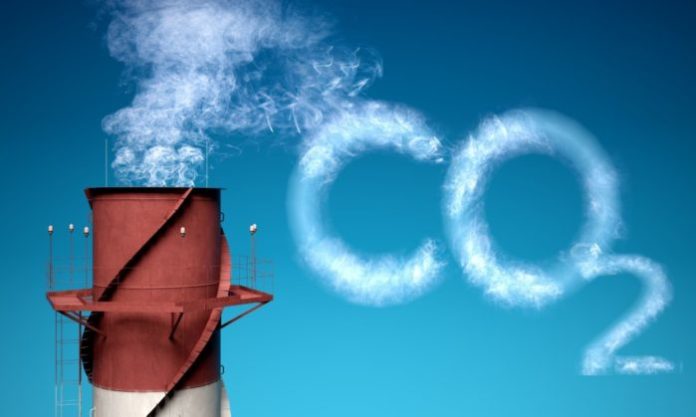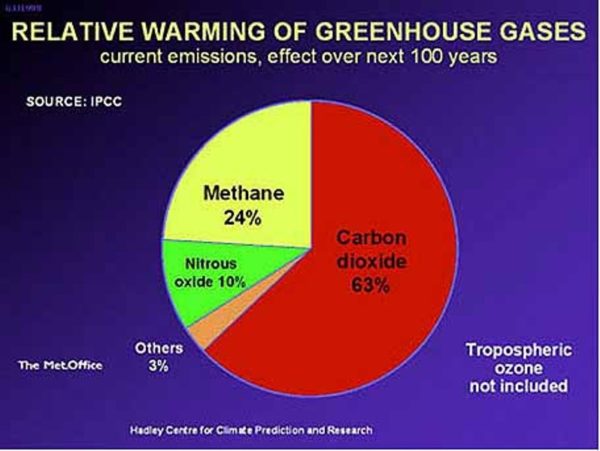
In the scientific world, there is something called serendipity. The word is used to denote the occurrence or invention of something beneficial by chance.
For years, governments and climate change activists have struggled to convince the world to cut down on greenhouse emissions. A greenhouse gas is any gaseous compound in the atmosphere that is capable of absorbing infrared radiation, thereby trapping and holding heat in the atmosphere. By increasing the heat in the atmosphere, greenhouse gases are responsible for the greenhouse effect, which ultimately leads to global warming.
Carbon dioxide (CO2) is one of the gases that are responsible for global warming. CO2 is a byproduct of fuel consumption. Apart from it being harmful to the atmosphere, it also has devastating consequences on human health, mainly through respiratory diseases.
In the past, researchers have attempted to convert this fuel byproduct back into energy, for future use. As the experiments proved unsuccessful, researchers were hoping that one day their dream would eventually come true. And indeed, it did. Unexpectedly.
Researchers from the Oak Ridge National Laboratory, Tennessee, United States, have announced that they have accidentally discovered a catalyst that is capable of transforming CO2 gas into high yields of ethanol. The discovery has been accepted and published in the online journal ChemistrySelect.
According to the researchers, they can do this without the use of rare and expensive elements such as platinum; with the process said to be very cheap and efficient.
The good news is, the new energy produced from the CO2 is said to be environmentally friendly. Developing the new fuel could significantly boost the already booming renewable energy industry.
The researchers have suggested that their new process could be combined with other renewables, such as solar or wind power, in order to efficiently harness those energy sources. Excess electricity produced by wind and solar is often lost when it is stored in batteries. However, by applying this new discovery, the researchers said the excess electricity could be used to produce ethanol to power solar factories and turbines when there is insufficient sun or wind energy. This method will cut down the costs of production for factory owners, ultimately benefiting the entire world.
Currently, ethanol produced from organic matter, such as corn or sugar, is said to be the most widely used biofuel in the world. Many countries, including the United States and China, are increasingly attempting to make ethanol a mainstream fuel in order to cut down on the use of fossil fuels, which are responsible for the rapid climate change.
The researchers revealed that tiny particles of carbon and copper, as well as nitrogen and electrical currents, helped trigger a chemical reaction that unexpectedly converted CO2 into ethanol.
Lead researcher, Adam Rondinone said in a press release announcing the discovery that they could convert CO2 by a simple method to ethanol.
“We’re taking carbon dioxide, a waste product of combustion, and we’re pushing that combustion reaction backwards with very high selectivity to a useful fuel. Ethanol was a surprise – it’s extremely difficult to go straight from carbon dioxide to ethanol with a single catalyst,” he said.
The researchers are now planning to conduct further tests to determine how their conversion technique could be used to produce ethanol on an industrial scale and used widely.
Many concerned researchers have welcomed the new discovery. A senior scientist and fuels expert from the Union of Concerned Scientists, Dr Jeremy Martin told Al Jazeera in an interview that the discovery could be a “building block” towards creating a low-carbon energy system.
Dr Matin said: “This work is building the foundation for a chemical industry that runs on electricity and CO2, which can help us build a zero-carbon economy. Improving yield and efficiency and developing catalysts that do not require rare elements are critical to scaling these processes up cost effectively. The contribution of such a process to reducing pollution depends on having abundant clean electricity. We are making progress in this area, but we still have a lot of work to do.”
You want to support Anonymous Independent & Investigative News? Please, follow us on Twitter: Follow @AnonymousNewsHQ
This article (Researchers Accidentally Find Simple Way to Convert Harmful CO2 Gas to Green Energy) is a free and open source. You have permission to republish this article under a Creative Commons license with attribution to the author and AnonHQ.com.








